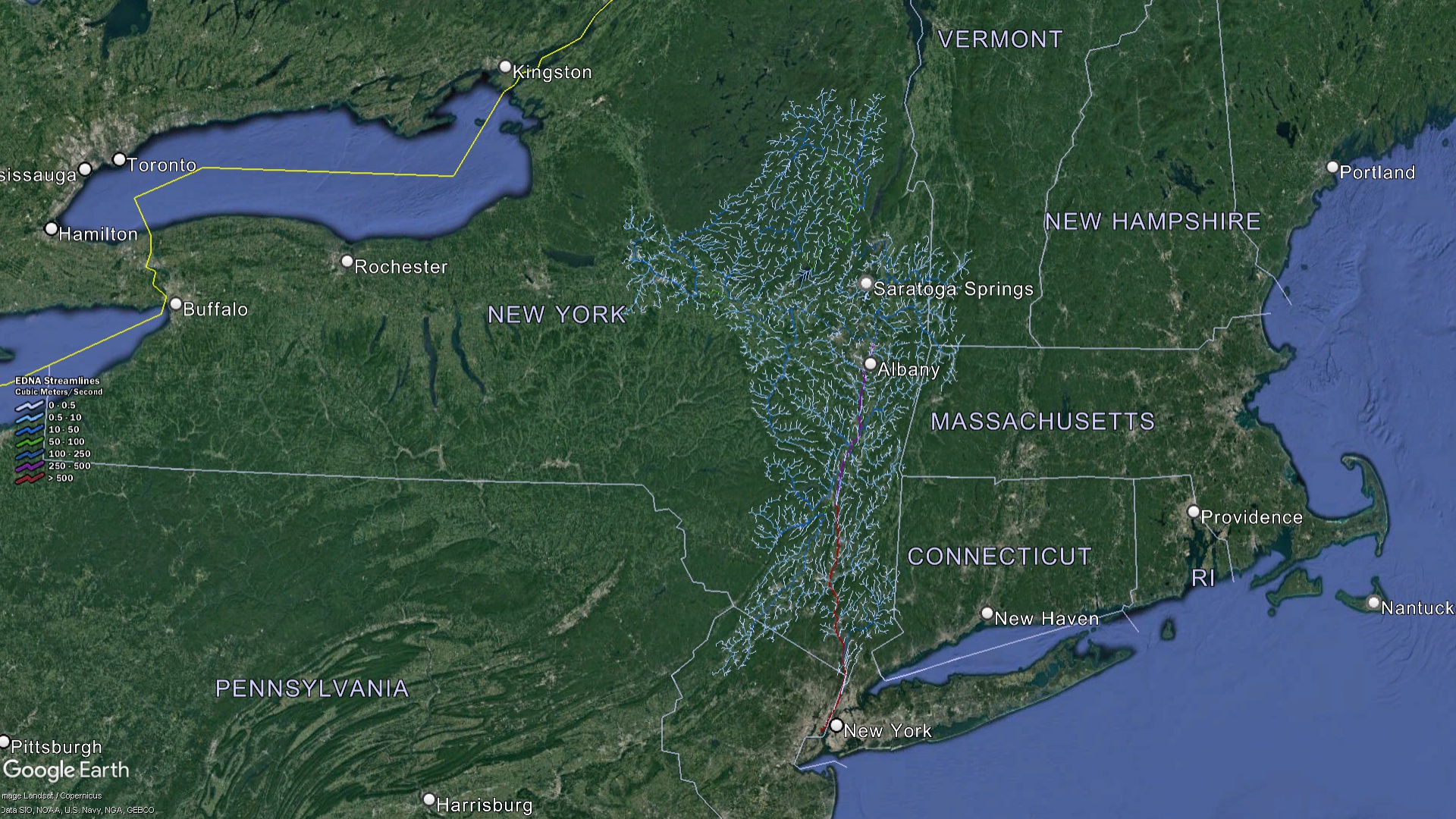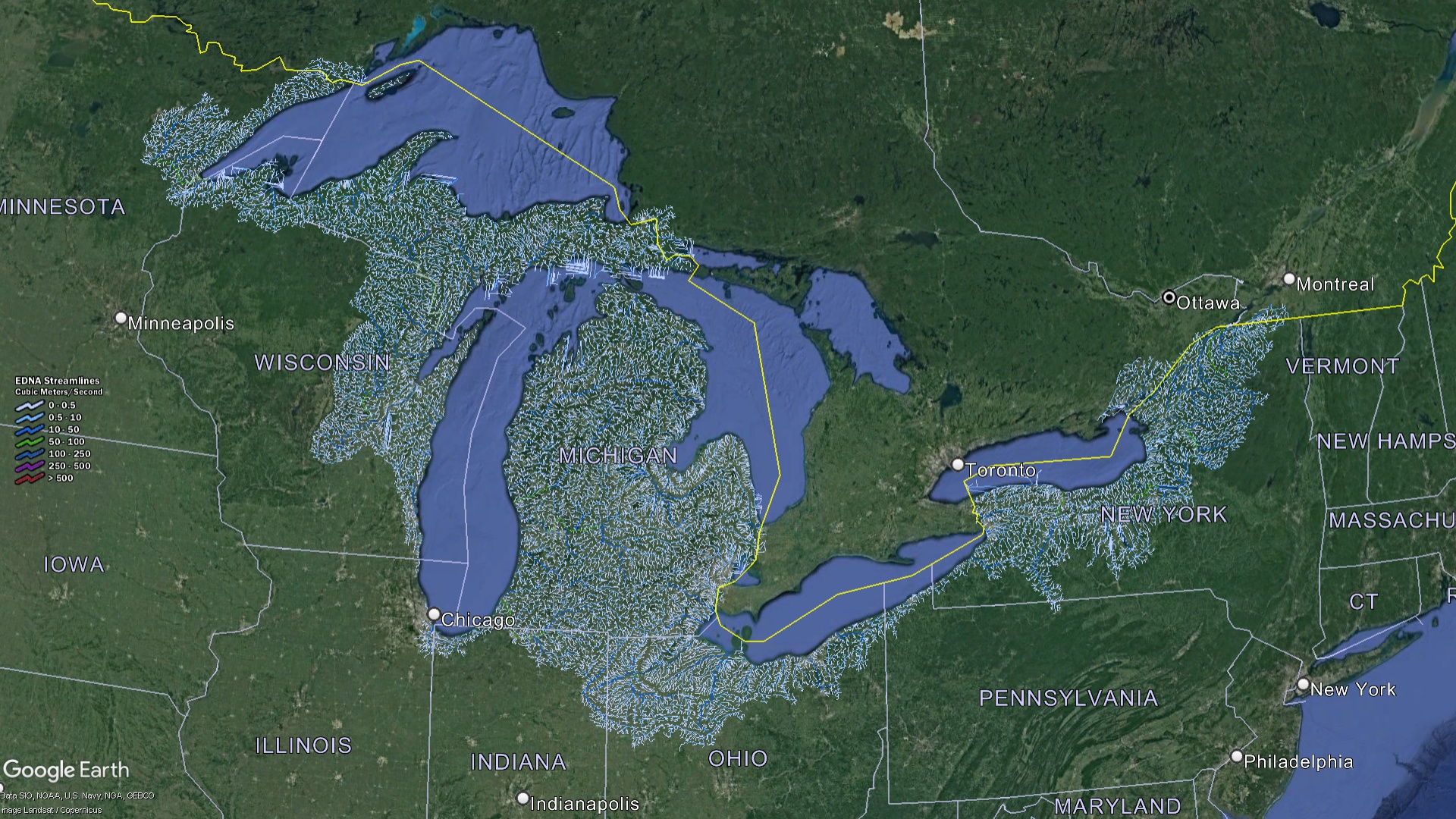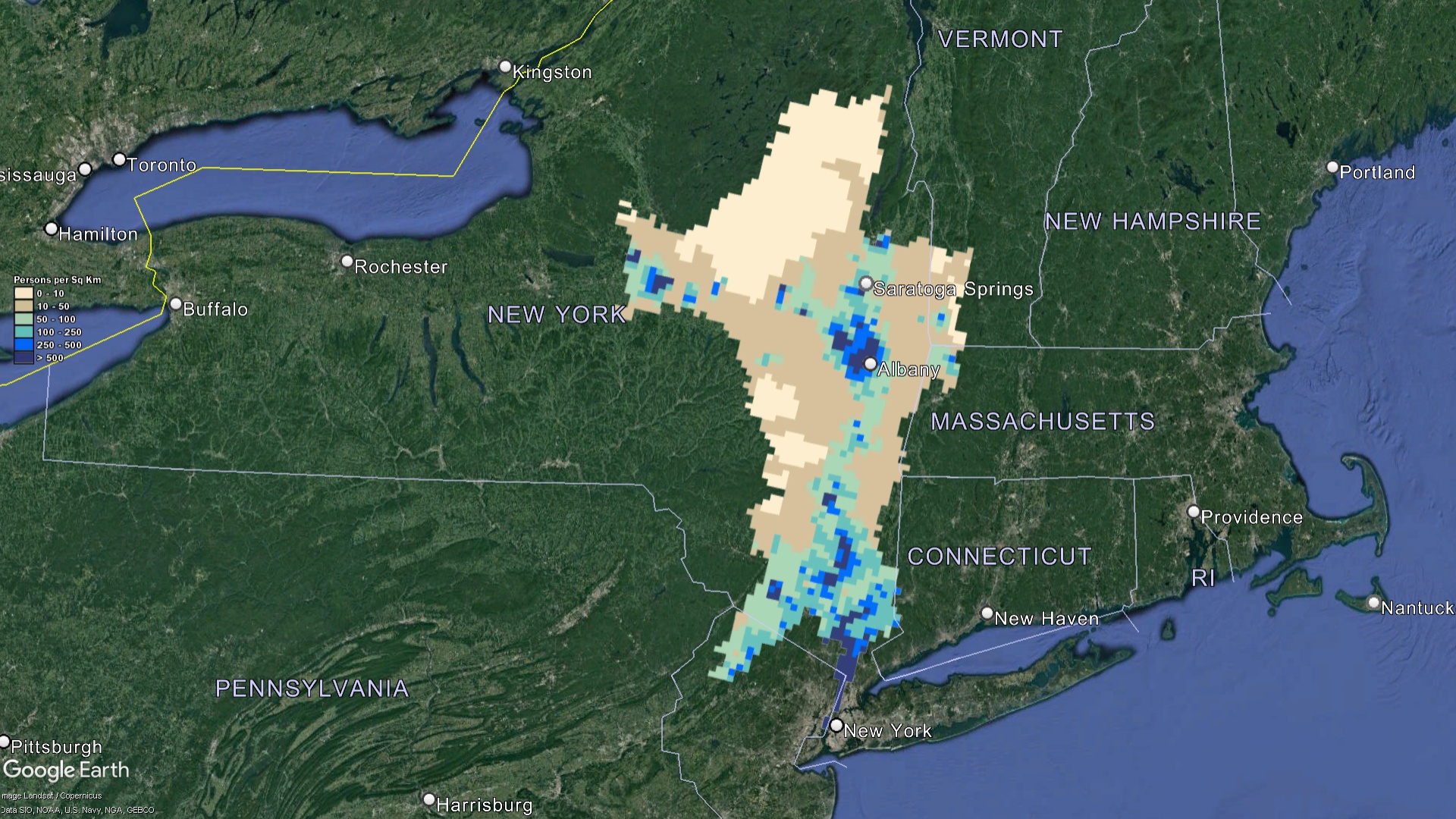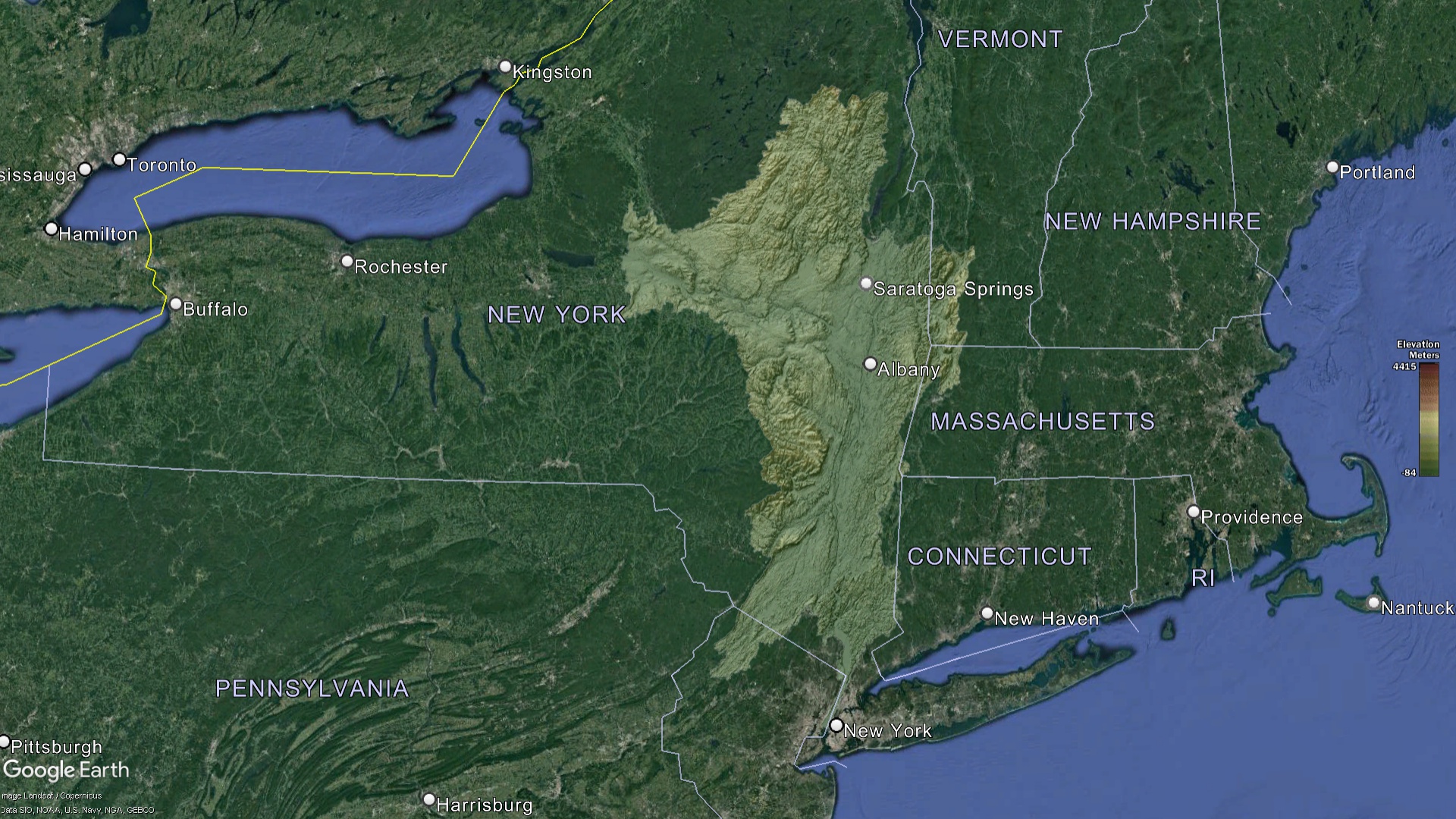New York Watershed Maps
New York Watershed Maps
We Build Custom 2D & 3D New York Watershed Maps
Did you know we make
custom
3D Watershed Maps

New York Watershed Maps
New York, often hailed as the Empire State, is known for its towering skyscrapers, bustling streets, and iconic landmarks. However, beneath its urban veneer lies a complex and vital network of watersheds that are integral to the state’s ecological balance, economic vitality, and cultural legacy. With the aid of watershed maps, we gain an in-depth understanding of these waterways and their broader significance. Join us as we embark on an enlightening exploration through New York’s watershed maps, uncovering the secrets, challenges, and conservation efforts linked to these crucial water systems.
Introduction to Watersheds
At its core, a watershed is an area of land where all water, from rainfall or snowmelt, drains off and collects into a shared destination, such as a river, lake, or reservoir. Watersheds are vital for the health of our ecosystems, ensuring the proper flow and filtration of water, supporting diverse species, and providing essential resources for human consumption and use.
Delving Deeper into New York’s Key Watersheds
Nestled within the diverse landscape of New York State are intricate water systems, each telling a unique tale of nature, history, and human interaction. Let’s journey deeper into some of New York’s most pivotal watersheds.
Hudson River Watershed
- Origin: This majestic river takes birth in the pristine lakes of the Adirondack Mountains, carving its way through the scenic Hudson Valley.
- Ecology: Rich in biodiversity, its shores and waters support species like the Atlantic sturgeon, bald eagles, and the shortnose sturgeon. Wetlands along the river act as vital habitats and natural filters.
- Economic and Recreational Significance: Historically an essential trade route, today, the Hudson continues to facilitate transportation. Its captivating beauty and recreational offerings, from boating to fishing, draw locals and tourists alike.
- Cultural Relevance: The river has inspired artists, writers, and thinkers, giving rise to the famed Hudson River School of painting.
 New York-Hudson Watershed Streams
New York-Hudson Watershed Streams
Susquehanna River Basin
- Geographical Span: Beginning modestly in Cooperstown, NY, this river travels through Pennsylvania, gathers momentum, and finally pours its waters into the Chesapeake Bay in Maryland.
- Agricultural Backbone: The river and its tributaries irrigate vast agricultural lands, making it a linchpin for New York’s farming communities.
- History and Culture: Indigenous tribes once thrived by its banks, and as European settlers arrived, it became central to trade, communication, and expansion.
Long Island Watershed
- Geographical Coverage: Spanning the length and breadth of Nassau and Suffolk counties, this watershed is geographically compact but critically significant.
- Water Source: Tapping into vast underground aquifers, this watershed quenches the thirst of millions of Long Island residents daily.
- Challenges: The dense urban clusters, coupled with industrial activities, pose threats like pollution and over-extraction. The delicate balance between consumption and conservation is a continuous challenge here.
Great Lakes Watershed
- Location: Hugging the borders of western and northern New York, this watershed is part of a larger system that touches several U.S states and Canadian provinces.
- Ecological Abundance: Lakes Erie and Ontario, the primary Great Lakes bordering New York, teem with life. From native fish species to migratory birds, these lakes are biodiversity hotspots.
- Economic Drivers: Beyond their ecological importance, these lakes propel industries. Shipping routes, fisheries, and tourism centered around natural attractions and water sports play a significant role in the regional economy.
 Great Lakes Watershed Streams
Great Lakes Watershed Streams
Sample 3D Watershed Maps
Unlocking Secrets with New York’s Watershed Maps
New York’s intricate watershed maps are not merely visual representations; they serve as a crucial bridge between understanding our surroundings and the need for conscientious protection of the state’s aquatic wealth.
-
Education as Empowerment: By weaving these detailed maps into the academic fabric, students get a comprehensive view of New York’s waterscapes. This knowledge isn’t just factual; it inculcates a sense of stewardship, fostering an upcoming generation that understands and respects the importance of watersheds and their conservation.
-
Scientific Exploration: For a plethora of environmental scientists, hydrologists, and conservation experts, these watershed maps are indispensable. They provide a framework to undertake meticulous studies examining water quality, tracking the intricate flow dynamics, and understanding the ever-evolving human footprint on these crucial water systems.
-
Guided Governance: As custodians of the state’s resources, policymakers lean heavily on these maps. They offer clarity and guidance, helping formulate precise regulations and strategies. This ensures that every water-related decision strikes a balance between immediate needs and long-term sustainability.
 New York-Hudson Watershed Land Characteristics
New York-Hudson Watershed Land Characteristics
Interweaving Economies and Cultures: The Watershed Influence
New York’s watersheds aren’t just geographical entities; they’re deeply rooted in the state’s socio-economic and cultural tapestry.
-
Economic Catalysts: These water systems are the lifelines of numerous economic activities. Be it the lush agricultural landscapes nurtured by the Susquehanna River Basin or the vibrant trade hubs along the Hudson’s banks, watersheds are intrinsic to New York’s prosperity. Furthermore, they magnify the state’s allure as a tourist destination. Iconic attractions, such as the scenic beauty of the Finger Lakes or the adventure trails around Lake Erie, beckon travelers from around the world, contributing significantly to the state’s coffers.
-
Cultural Chronicles: Beyond their economic significance, the watersheds are silent witnesses to the evolving tapestry of New York’s history. Their shores have been treaded by indigenous tribes, explorers, settlers, and modern-day New Yorkers. Each era has left its mark, turning these waterways into repositories of countless tales — tales of trade, conflict, camaraderie, and exploration. This rich history has, over time, seeped into art, music, literature, and folklore, making the watersheds not just physical entities, but emblematic of New York’s diverse and vibrant cultural mosaic.
 New York-Hudson Watershed Population
New York-Hudson Watershed Population
Navigating Challenges and Championing Conservation in New York’s Watersheds
New York’s watersheds, while being immense reservoirs of ecological, economic, and cultural wealth, are not without their set of challenges. Addressing these concerns requires a multi-faceted approach:
-
The Pollution Predicament: The intersection of industrial growth, expansive agricultural practices, and dense urban sprawls has intensified the issue of pollution. Chemical discharges from factories, nutrient-rich runoffs from farms, and wastewater from urban centers seep into the waterways. This not only endangers the diverse aquatic ecosystems but also raises serious concerns about the quality of water available for human consumption.
-
Tackling Over-Extraction: With the surge in population numbers and industries seeking to establish their footprint in the state, the demand for water has seen an exponential rise. This has often led to the over-extraction of water, endangering the equilibrium of the watersheds and potentially depleting them faster than nature can replenish.
-
The Climate Change Conundrum: Global shifts in climate patterns have local repercussions. New York’s watersheds are feeling the heat, quite literally. Changes in precipitation frequencies, fluctuating temperatures affecting snowmelt and water evaporation, and the looming threat of sea-level rise, especially along the coastal zones, are challenges that cannot be ignored.
Yet, in the face of these challenges, New York’s spirit of resilience and innovation shines through. There are rays of hope piercing through the clouds:
-
Legislative Measures: Instruments like the “Clean Water, Clean Air Bond Act” signify the state’s commitment to environmental preservation, emphasizing cleaner waterways and a healthier environment.
-
Community-led Initiatives: At the heart of conservation are the local communities. Grassroots movements are galvanizing public support, with locals playing a proactive role in watershed management. These community-driven programs are pivotal in fostering a sense of ownership and responsibility towards the watersheds.
-
Harnessing Technology: Technological advancements are being leveraged to monitor water quality, predict potential threats, and implement solutions. Digital platforms enable real-time monitoring and swift response mechanisms.
Together, these endeavors signal a renewed commitment and hope for the future, striving to ensure that New York’s watersheds continue to thrive for generations to come.
 New York-Hudson Watershed Elevation
New York-Hudson Watershed Elevation